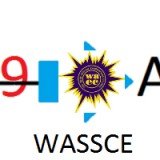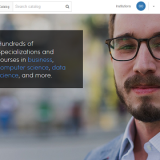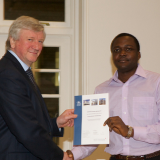Unlimited Memory (2014) Book Summary and Insights
Book Title: Unlimited Memory
Subtitle: How to Use Advanced Learning Strategies to Learn Faster, Remember More and be More Productive (Mental Mastery Book 1).
Publication Date: 2014
Author Name: Kevin Horsley
Book Summary
Regardless of whether you have to study for an exam, learn a new language or just void embarrassing memory lapses’, improving the memory is simpler than it sounds. All it takes is trying out different memory techniques and in this book the author explains the different techniques. In this book, you will learn how to focus and concentrate with no form of distractions, be able to store and recall valuable information to maximize efficiency and minimize wasted time, stress and to avoid mistakes. In Unlimited Memory, the author makes very creative illustrations on how to memorize information and to remember it. This book touches the practical and accessible aspects of improving memory in a bit to increase productivity. To find out more, please read the following insights.
Who Is This Book For?
This book is for those who have never learned memory techniques before and for those who find it difficult in remembering information. It is for those who want to exploit the powers of their mind.
About The Author
For over 20 years, KEVIN HORSLEY has been analyzing the mind and memory and its capacity for brilliance. He is one of only a few people in the world to have received the title International Grandmaster of Memory. He is a World Memory Championship medalist, and a two-time World Record holder for The Everest of memory tests. Kevin is also an author of four books, and the designer of a times table game with the Serious Games Institute at North-West University Vaal Campus. Kevin is a professional speaker, and assists organizations in improving their learning, motivation, creativity, and thinking.
Buy Book: Support The Book Author And Our Work
Great books should be read, studied, and reviewed frequently, so reading the actual book may provide more value to you than the book insights on this page. Besides, this would support the work of the book author and what we do on LarnEdu. What could be better?
Important Notes
We get a small compensation from Amazon when you visit your nearest/local Amazon site via our affiliate link to purchase an item within 24 hours or if you add it to your cart and checkout within 90 days. This is no additional cost to you and supports our work.
The information on this page is meant to supplement the actual book(it is not a book review but distils the key insights or ideas from the book in under 5000 words). The content creator or LarnEdu does not necessarily support the views, thoughts, and opinions expressed in the text/book. Reasonable skepticism should be applied with any views, thoughts or opinions expressed/shared by the book author or content creator.
Reading the contents of this page does not guarantee specific results. The best lessons are achieved from taking consistent action in the real world rather than being addicted to the illusion of progress by getting stuck on reading an infinite amount of books or book summaries and insights. LarnEdu and the content creator accepts no responsibility or liability for the accuracy of the information on this page or how it is used.
Book Insights

Improving Concentration with A Clear Mind.
Our memory is an integral part of who we are. For most people the ability to concentrate on information with no form of distractions and being able to remember and recall said information has always been difficult. However, there are ways that one can use to improve concentration. One way is to obviate one’s self from any form of internal conflict; do away with anything that may hinder your concentration. For instance, the time spent between browsing through emails and sending a few messages on the phone is a distraction for basically every individual. In any case, a good means of discarding internal conflict is to quit multitasking. As per neuroscience specialists, performing various tasks really backs you off by 50 percent and builds your odds of committing an error by 50 percent. Another keen move is to keep your mind from meandering by giving yourself a reason. That way, you can with little of a stretch remind yourself why you wanted to concentrate on something to begin with. For this instance, the PIC method may prove useful: Purpose gives you a reason for learning. When you have discovered a reason, question yourself to become interested and curious about what you have realized.
Bringing Information To Life.
The inability to recover a memory is one of the foremost common causes of forgetting. We can curb this regular incapability to retrieve information from the memory. Infusing your creativity into bringing information to life is a simple way of retrieving information. Using your imagination to form a noteworthy movie or picture is a good way to start. The more actively you imagine and visualize information, the more effective it will stick in your mind for recollection. Let’s say you are trying to learn the chemical elements on the periodic table, you can imagine and create a poem or song using the first letters from each element on the periodic table. Or you are studying and need to remember the names of different English Writers in Literary History; you can try painting a unique picture with any features of each writer or picturing each writer as a character in one of your favorite movies. To make the pictures you have imagined more impressive and increasingly paramount, use the SEE method. Our senses are part of the medium whereby information enters our brain. Creating a multisensory image through smell, sight, sound or taste helps in recalling information. The next being exaggeration regardless of logic. Make your images larger or smaller than life. You are more likely to remember a white colored elephant with a purple cape than an ordinary elephant. Yes it defies logic, but that is the fun of the process. Exaggerate with humor; tickle your mind. Finally, energize. Including a bit of action will make the information a lot more distinctive. Make the information vivid, colorful and not boring. Now imagine the elephant flying. That is an image you are unlikely to forget.
Sorting Information Into Existing Long-Term Memory
After using your creative ability into bringing information to life, the next step is to learn to organize them in your mind. You can do this best by using the loci method, otherwise known as the route method, which involves combining new information with something already familiar. This method works on the presumption that you can best recall places you are familiar with, so in case you will connect something you need to remember with a place you know exceptionally well, the area will serve as a clue that will assist you to remember. This method works very well with visualization as certain studies have shown. For instance, you want to remember important points in a speech, a list of items or names. Now picture a well-known location, like your house, then visualize a series of areas in the house, now place each of the items you want to remember at one of each area or rooms in the house. When you need to remember the items visualize your house and go through it room by room in your mind. As you rationally make your way through your house, every item you connected with each area or room should spring to your mind.
Remembering Numbers And Dates Through Images
In nearly everything we do, there are numbers involved, dates, passwords, credit cards and so forth. Numbers are difficult to remember because they are purely abstract. Our brains usually work best using lively and vibrant images and numbers does not qualify as either. If one needs to remember numbers, one need only adopt these three simple steps. The basic idea is to convert these numbers into images that will stick in your mind. The first step is to learn a system that changes numbers into letters or changes how those letters sound. This system works by assigning a consonant or a consonant sound to each number. Also, using the shape of the number after you have assigned a sound to it also makes it easier to remember. For example, the number one is like the letter ‘t’ with a line through it. The second step is to transpose the numbers or dates into letters and then into words or phrases. This will also aid in recollection. The last stage is to visualize a picture for you to remember. Take the word you have created in the second step and turn it into an image by using the SEE method. When each number represents an image, you can hold the number in your mind and place it on a system to remember as many numbers as you choose. With merely knowing how these steps work in changing numbers into words, it should be easy enough to form vital images that you can use in remembering specific numbers and dates.
Remembering Names
It is very important to always remember a person’s name. Research has shown that remembering names is important for making connections with people. It breeds a sense of value and creates a comfortable atmosphere for communication. In remembering names, the CCCC system; concentrate, create, connect and continuous use is especially good. The first is to concentrate on the person’s name. Listen and get genuinely interested in the other person’s name. You need to cut through any clutter and focus on the person’s name and try as much as possible to say the name out loud. Repeat it back to the person; this will improve your recall. The second step is to create an image for the name. The mind remembers what it sees easier than what it hears. Once you create the image, it becomes easier to remember the name. The next thing is to connect the image to the face of the person you are trying to remember. To achieve this connection method, one has to make a meaningful association to the person, by various means ranging from using a distinct feature on their face or any specific quality. You can also use the location where you met the person because when we meet people for the first time we also remember the place that we first met them. Let’s say you pass a location where you have met someone, try to recall the name. Last, reviewing the names and making use of them continuously. Talk about the name. It also helps to write the name down on a notepad perhaps, not just the name also add the accompanying distinctive feature.
Reviewing As A Means of Remembering Information.
When we learn new information, we can remember it best instantly after we have learned it. However, as time passes, we forget certain details, only recalling a little information of what we have learned even if it has just been a few days. When you do not have the chance to apply a relatively new information, it is very easy to forget what you have learned. Hence, why it is so imperative to review what you have learned regularly to enable you remember it for the long-term. The reason we review is to make the information more solid in our minds. Each time you return to what you have memorized, the information absorbed has more of an effect in the mind than it did at a previous time. Reviewing does not require a lot of time. When you review, it helps you think more about remembering. The conclusion you can make from this is that reviewing what you have memorized is essential. You will lose most information you have stored already in your memory without reviewing them. It is noteworthy to take advantage of the memory techniques learned.
Key Quotes
Here are some key quotes from the book:
“Multitasking is a myth!” – Kevin Horsley, Unlimited Memory: How to Use Advanced Learning Strategies to Learn Faster, Remember More and be More Productive (Mental Mastery Book 1).
“You can remember mountains of information when you are interested in the subject. It almost feels automatic and your concentration is at a peak. Your deficits of attention are mostly interest deficits. Your mind never wanders away; it only moves towards more interesting and outstanding things.” – Kevin Horsley, Unlimited Memory: How to Use Advanced Learning Strategies to Learn Faster, Remember More and be More Productive (Mental Mastery Book 1).
“The secret to accelerated learning is superior organization.” – Kevin Horsley, Unlimited Memory: How to Use Advanced Learning Strategies to Learn Faster, Remember More and be More Productive (Mental Mastery Book 1).
Conclusion
Memory is fickle. Understanding and following the strategies and techniques in this book will help improve memory and enhance retention and recollection of information. And with memorizing what you have learned, it is paramount to review what you learned to avoid forgetting.
Since You’re Here …
Great books should be read, studied, and reviewed frequently, so reading the actual book may provide more value to you than the book insights on this page. Besides, this would support the work of the book author and what we do on LarnEdu.
You can also support the work we do at LarnEdu work by making a one/off or monthly donation(via PayPal) for as little as £0.99 or sharing this content.
Do you have any feedback or suggestions? Use the comment section below or send us a message.















